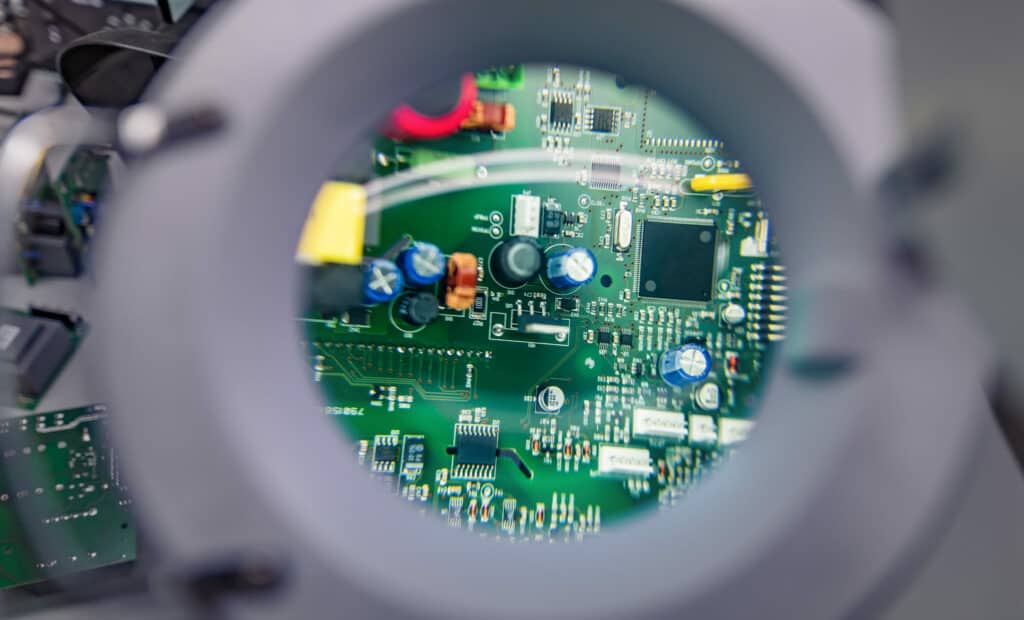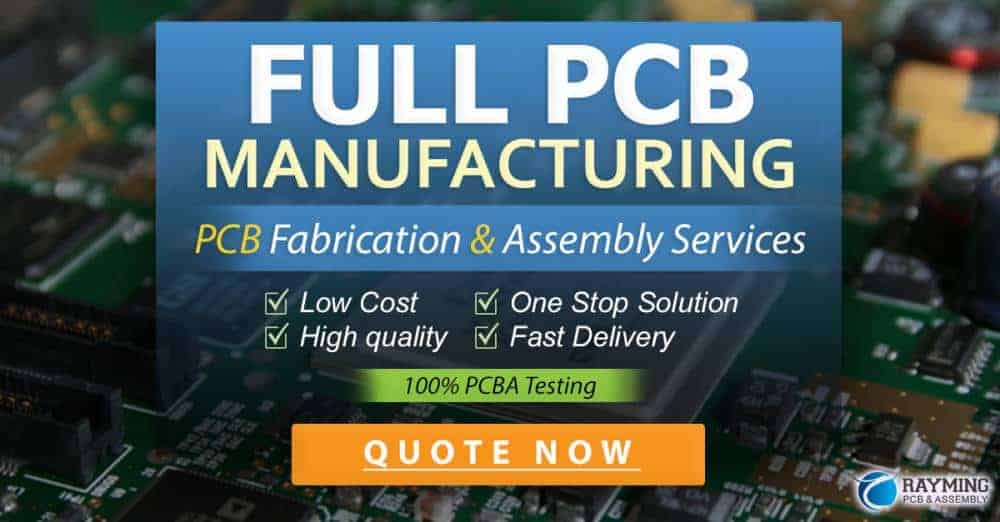If you’ve been wondering what Microelectronic Assembly is, you’ve come to the right place. In this article, we’ll discuss what makes a Microelectronic Assembly different from the traditional assembly, how these processes work, and how quality control plays a critical role in Micro Electronic Assemblies.

What is a Microelectronic Assembly?
A Micro-Electronic Assembly (MEA) is a miniature electronic device containing an integrated circuit and other smaller sub-assemblies such as resistors, capacitors or inductors.
Microelectronics assembly is the process of putting together discrete electronic components to create a circuit. The process is typically automated, requiring only minimal human intervention. Some companies offer assembly services, such as building integrated circuits and testing components. Microelectronics are an important component of many products, from cell phones to small surgical tools.
The first step in assembling a microelectronic assembly is to prepare the individual components. The components are then placed onto the circuit board and soldered together. The final step is to attach it to its packaging and provide any necessary documentation.
What Makes Microelectronics Assembly Services so Different from Traditional Electronics Manufacturing Processes?
Advanced electronics assembly brings research into the real world by minimizing costs and leveraging massive engineering expertise. It can be an essential part of the production process for startups and Fortune 500 companies alike. Ultimately, these teams can make a real difference in the world by creating the next generation of technology.
Modern microelectronic components and systems are becoming smaller and lighter. To meet this challenge, new materials and manufacturing techniques are coming up to give engineers more structural freedom in 3D and simplify parallel fabrication routes. In addition, these new materials can also increase integration density and improve performance. This way, microelectronic devices become more efficient, functional, and lighter.
Modern electronics manufacturing is a complex process that requires a high degree of precision and accuracy. This is because modern electronic devices have many parts and mechanisms that you must assemble with great care.
On the other hand, traditional electronics manufacturing processes involve assembling large pieces of raw materials into one product. This means that traditional manufacturing processes require less precision than modern manufacturing processes.
How do Micro Electronic Assemblies Work?
Micro Electronic Assemblies (MEA) are the building blocks of any electronic circuit. They are common in all types of electronics, from smartphones to cars.
The MEA is a silicon chip placed on a substrate material and then covered with an insulating layer called the dielectric. MEA has two layers: the top layer comprises metal wiring, while the bottom layer consists of transistors and capacitors. We connect the two layers by a bond wire which transfers electrical signals from one layer to another.
Other components of the Microelectronics Assembly Process
Micro-electronic assemblies comprise of multiple components. Some of these parts are packaged together in a wafer, a sheet of plastic or a die. The wafer is put through a series of tests using computer-directed equipment. Some chips fail due to dust or other factors, which is why you mark the failed ones for another attempt. Fine gold wires connect the chip to pins on a board. Afterward, the chip is placed in a ceramic or plastic package. You then solder the pins into a circuit board.
As with any other electronic component, a MEMS package must be designed so that unwanted parameters will not affect the output of the assembly. The MEMS must be sensitive enough to admit the desired signal variables with minimum distortion. It must also be robust enough to handle the environment in which it will be used. The MEMS package must also have acceptable AP&T properties and be affordable.
Microelectronic assembly suppliers must work closely with customers to develop processes that reduce field issues and eliminate quality excursions. A good place to start is by developing solid control plans. Then, they can implement tools such as failure mode analysis to identify areas of control that need improvement. Finally, you can feed this information into the process to improve it.
The electronics industry has spent considerable resources developing AP&T techniques for microelectronic circuits. We can apply many of these techniques to MEMS. One of the challenges associated with MEMS is the transmission of nonelectronic signals through the package. The other challenge is rejection of unwanted parameters. There are no perfect techniques for parameter selection, and it is difficult to control the cross-talk between desired and undesirable parameters.
Quality Control In Microelectronic Assembly
Quality control is a crucial element of manufacturing electronics. Without it, you risk losing money, wasting time, and not being able to protect your customers from substandard products. Furthermore, substandard products can affect your company’s viability, revenue, and market share. Therefore, OEMs, especially those in critical industries, should ensure a comprehensive quality control process. The failure of a circuit board can be devastating. Therefore, quality control is integral to all circuit board manufacturing processes.
To improve quality control, one must scrutinize all aspects of electronic manufacturing. Ideally, a quality control strategy would target the components, data, and manufacturing process. For example, accurate data is essential for automated PCBA assembly processes. Traceable data helps determine if there are errors in the process. If an error occurs, it is important to identify the root cause of the problem and make necessary changes. A company should also use a quality control methodology such as ISO 9001 when developing projects.
Industry 4.0 is driving digitalization and standardization across the manufacturing industry. MES enables manufacturers to meet these expectations by automating production processes, applying advanced scheduling for shorter lead times, and managing material flows. It also enhances visibility across the supply chain and within operations. This connectivity enables real-time decisions.
Advanced technology and advanced analytics enable digitally enabled production-and-quality feedback loops. This approach allows businesses to predict negative quality trends and remove bottlenecks faster. For instance, a global component supplier recently implemented a tablet-based quality feedback loop in a lead assembly plant in the United States. This resulted in reduced rework, improved productivity, and $35 million annual savings.
Improve Your Micromachining Processes

Micromanufacturing is a process that enables designers to manipulate materials on a micro or meso scale. While certain materials cannot withstand external stresses caused by traditional manufacturing processes, certain alloys are perfectly suited for micromachining. In addition, by improving your micromachining processes, you can produce smaller, more uniform parts.
Micromachining is an intricately controlled process that requires all components to work together in a synchronized manner. The laser, optical stages, robotic arms, conveyors, and software all work together to create the best result. In addition, you can install custom software on your machine to help you monitor your micromachining process and log errors.
We can use various micromachining processes to manufacture the components for micro electronics. Chemical wet etching, for example, is a technique in wide use for bulk micromachining. Chemical wet etching is an excellent choice for MEMS applications due to its high etch rate and selectivity. In addition, by altering the chemical composition of the etching solution, you can adjust the crystallographic planes on the substrate.
In surface micromachining, an oxide layer is first deposited. You then remove this temporary layer. Then, apply a thin film of polysilicon. This thin film forms the structural mechanical layer. Once complete, you polish the surface to create the final microelectronic device.
The Role of Automation in the SMT Industry
SMT assembly is an electronic assembly process in which one populates a printed circuit board with electronic components and then attach to a substrate.
The main advantage of SMT assembly is the ability to automate the process, which can increase productivity and reduce labor costs. However, a downside of SMT assembly is that it requires a large amount of expertise and capital investment.
SMT Assembly has become more popular in recent years because it is capable of producing high-quality products faster than traditional manufacturing processes.
In the SMT industry, automation is one of the most important factors that has helped to reduce production costs. Automation has been in use across many different industries, but this particular industry has been a pioneer in automating its production process. This is because it requires a lot of expertise and knowledge to produce good quality products. The SMT industry currently produces more than 60% of all integrated circuits on the market. This means that there are a lot of opportunities for automation in this particular industry.
Automation has greatly reduced the amount of manpower needed to produce a product. With automation, it is easier to produce more products and handle more orders than it was before. With automation, companies have reduced their production time by 50%. This is because they are not relying on manpower as much as they used to. The faster production times also open up other markets for the company such as electronics assemblers, military contracts and custom manufacturing. Therefore, many companies in the industry are moving toward faster production times with CNC machines.


